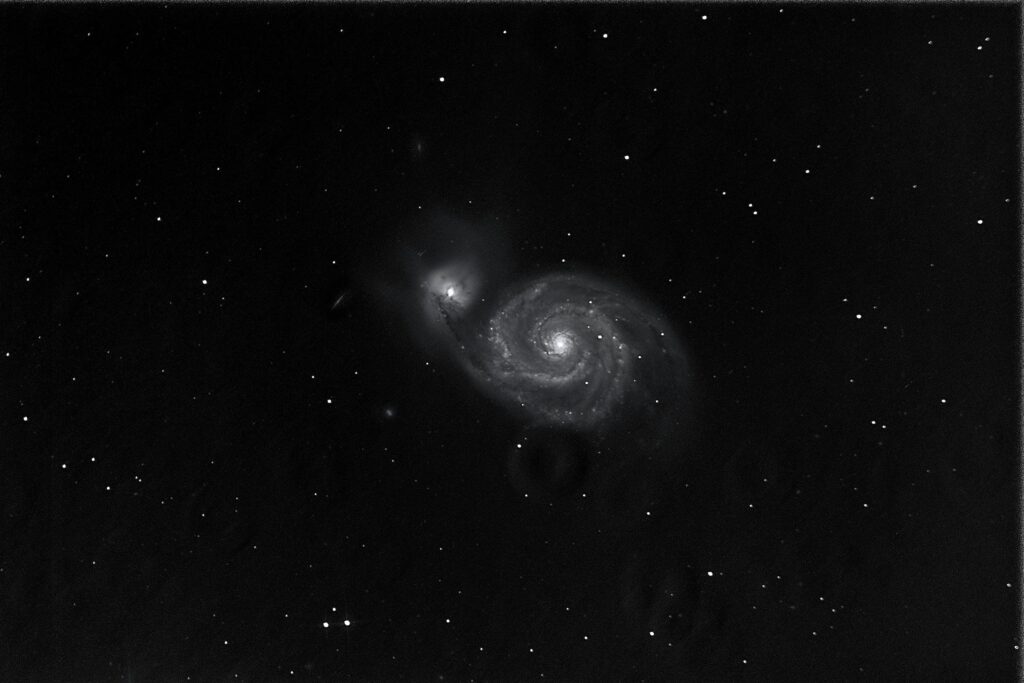M51 is a large "face on" spiral galaxy just below the end of the "handle" of the Big Dipper in the constellation Canes Venatici. There are several interesting features of this galaxy.
First, it is enormous. With an angular dimension of 11' (one third the apparent size of a full Moon) and a computed distance of 23 million light years, its true diameter is 100,000 light years (diameter = 0.00029 x distance x angular size).
Second, it contains an estimated 150 billion stars.
Third, the most conspicuous feature of the galaxy is the smaller galaxy (the bright oval at the end of one of the galaxy's arms) with which it is interacting. The smaller companion (NGC5195) is slightly "redder" in color because it is behind the enormous dust cloud connecting the two objects which is clearly visible in this image. According to the physical principle of Rayleigh scattering, light is scattered by small gas particles according to λ ^-4, meaning that shorter wavelength blue photons are scattered more (5-10x more) than longer wavelength red photons. This is why the sky is blue. It also means that we see the minimally scattered red photons as light passes through an intervening gas cloud. This results in red sunsets, and explains why the background galaxy in this image is more red than M51 itself.
Fourth, M51 is the first galaxy whose "spiral" structure was detected. Lord Rosse (William Parsons), using his 72" speculum telescope (the "Leviathan") in Parsonstown, Ireland, was able to detect the spiral structure in 1845. He did not know if M51 was a gas nebula in our Milky Way galaxy, or a separate galaxy an unimaginable distance away. That question was not conclusively resolved for another 85 years when Edwin Hubble, using the Hooker Telescope on Mt. Wilson in southern California, was able to resolve individual stars in the Andromeda Galaxy.
The Whirlpool Galaxy (M51)
Date Taken:March 25, 2012
Location Taken: Conditions of Location:2.2 FWHM
Equipment Used:14.5" Ritchey-Chretien telescope, SBIG STL11000 CCD camera, Astrodon RGB filters, TCC, PIR, remote guide head used with Takahashi FSQ106 for autoguiding, T-Point used for polar alignment (required for each imaging session due to my portable setup).
Processing Used:18 x 600 seconds luminance (total exposure of 3 hours). I will add RGB later which will make this the longest image I have ever taken.
Distance from Location:23 million light years
Constellation:Canes Venatici ("hunting dogs")
Other Link:
